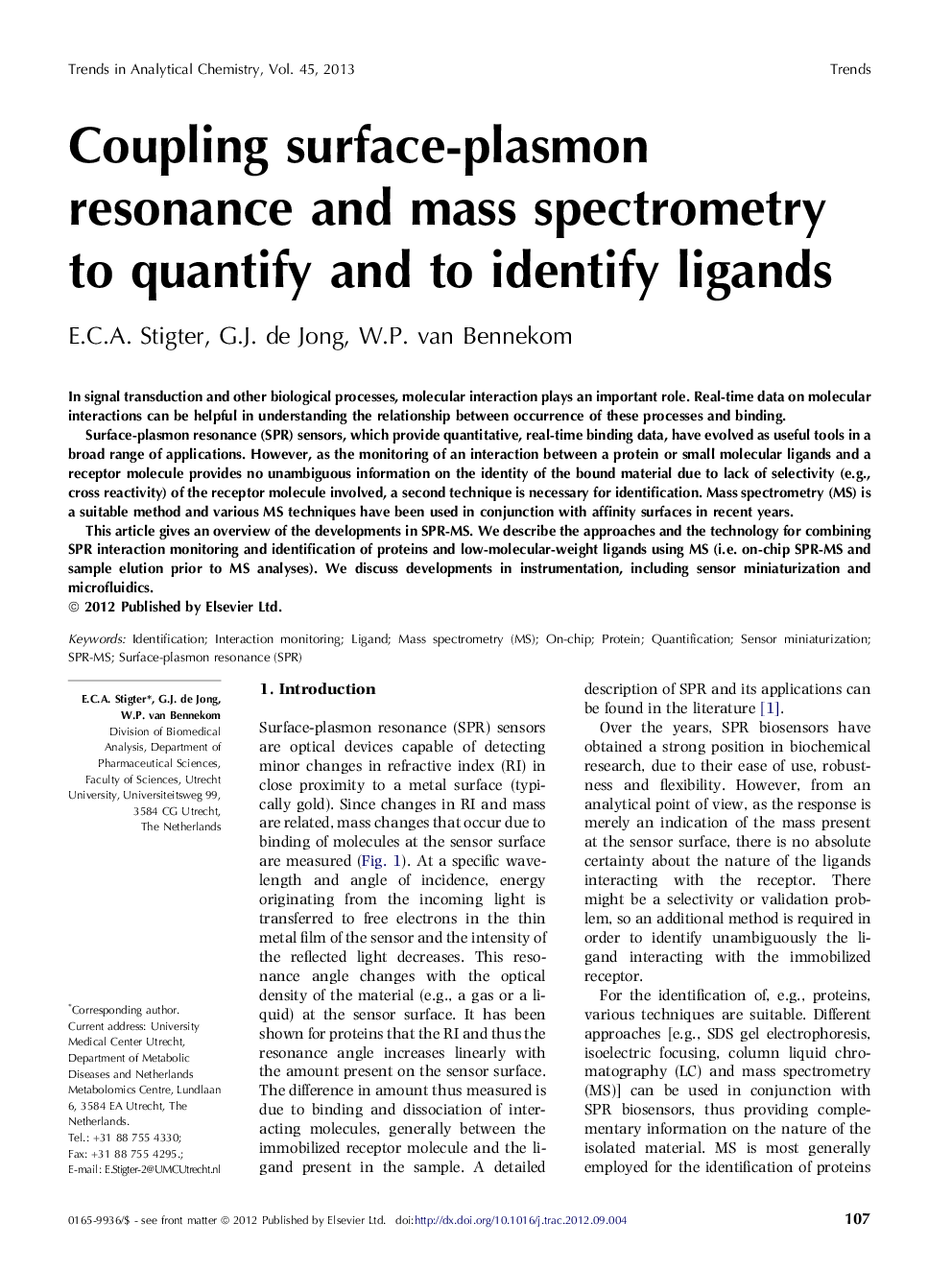| Article ID | Journal | Published Year | Pages | File Type |
|---|---|---|---|---|
| 1249171 | TrAC Trends in Analytical Chemistry | 2013 | 14 Pages |
In signal transduction and other biological processes, molecular interaction plays an important role. Real-time data on molecular interactions can be helpful in understanding the relationship between occurrence of these processes and binding.Surface-plasmon resonance (SPR) sensors, which provide quantitative, real-time binding data, have evolved as useful tools in a broad range of applications. However, as the monitoring of an interaction between a protein or small molecular ligands and a receptor molecule provides no unambiguous information on the identity of the bound material due to lack of selectivity (e.g., cross reactivity) of the receptor molecule involved, a second technique is necessary for identification. Mass spectrometry (MS) is a suitable method and various MS techniques have been used in conjunction with affinity surfaces in recent years.This article gives an overview of the developments in SPR-MS. We describe the approaches and the technology for combining SPR interaction monitoring and identification of proteins and low-molecular-weight ligands using MS (i.e. on-chip SPR-MS and sample elution prior to MS analyses). We discuss developments in instrumentation, including sensor miniaturization and microfluidics.
► Combining SPR quantification with protein and ligand identification by MS. ► Advances in on-chip SPR-MS and sample elution prior to MS analysis. ► Multi-analyte SPR-MS improves throughput. ► Instrumentation development may include combination of MS with alternative sensor principles.
